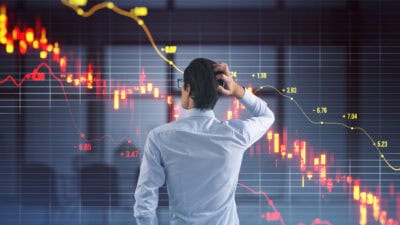1) It has been a flying start for the ASX so far in 2023, with the AFR reporting the S&P/ASX 200 Index (ASX: XJO) is "off to the best start in at least 30 years."
Quite remarkably, given all we've been through over the past two "covid" years – particularly the pandemic itself, high inflation and sharply higher interest rates – the ASX 200 index is trading within a whisker of its all time highs.
It's in sharp contrast to the beatings handed out to growth shares, particularly in the US, with the Nasdaq Composite Index (NASDAQ: .IXIC) down over 16% in the last 12 months.
Australian investors can thank our lucky stars the ASX 200 index has a hefty weighting to commodities – particularly oil and coal – helping propel the Whitehaven Coal Ltd (ASX: WHC) share price 246% higher these past 12 months, with the Woodside Energy Group Ltd (ASX: WDS) share price 50% higher over the same period.
2) Most of the heavy lifting has already been done by central banks as they've undertaken one of the most aggressive periods of sustained interest rate hikes in history in the fight against rampant inflation.
All eyes now are on the economy, and whether the landing will be hard or soft.
So far so good for the optimists, with consumers continuing to spend even as they face sharply higher mortgage repayments as low fixed rate deals roll off this year and next.
A trading update from shoe retailer Accent Group Ltd (ASX: AX1) said "trade has continued to be strong through November and December" with sales above expectations. Admittedly against softer "covid" trade last year, Accent total sales are up 39% for FY23, a stunning performance for a somewhat discretionary retailer.
Not surprisingly, the Accent Group share price is up 9% to $2.09 in Wednesday morning trade. Accent shares trade at around 15 times forward earnings and on a forecast fully franked dividend yield of around 5%… not cheap if consumers start putting their hands in their pockets later this year.
3) Consumer behaviour has me baffled. Given the coming interest rate shock, given consumer confidence is deeply pessimistic and given the falling house prices, I'd have thought people would be battening down the hatches, preparing for tough times ahead.
But no. Revenge spending post covid carries on, not this time on the stock market and online shopping, but on shoes, restaurants and travel.
With most working-age Australians never having experienced a "proper" recession, coupled with low unemployment and a high savings rate, consumers are partying now and worrying about tomorrow when it comes.
Helping too are superannuation balances, hardly moved for many Australians despite the macroeconomic ructions felt here and around the world.
She'll be right mate.
4) Before today, some economists were predicting/hoping the Reserve Bank of Australia would hold interest rates at the upcoming February meeting.
Deloitte Access Economics said there is an "everest of evidence" to suggest that the Reserve Bank should hold the rate next month.
"Australia's consumer-led recovery is rapidly running out of road, with the combination of falling house prices, rising interest rates, high inflation, low levels of consumer confidence, and negative real wage growth expected to combine to see spending growth decelerate markedly over coming months," said Deloitte's Stephen Smith on Investor Daily.
Just like I was saying…
Except, today's inflation print came in hot after headline inflation of 7.8%, comfortably ahead of expectations.
Cue the ASX 200 index going into a sharp reverse and Australian bond yields spiking higher. Cue also a locked-in 25 basis point rise in the cash rate in February.
Inflation is not done with yet.
Just when you thought we're through the worst, there could be pain ahead for equity investors, and more pain for interest-rate sensitive growth shares.
5) Speaking of pain, uber-bear Jeremy Granthan is quoted on Bloomberg as saying the popping of the bubble in US stocks is far from over and investors shouldn't get too excited about a strong start to the year for the market.
The 84-year old money manager says the S&P 500 Index (SP: .INX) could decline as much as 20% from current levels, adding…
"There are more things that can go wrong than there are that can go right. There's a definite chance that things could go wrong and that we could have basically the system start to go completely wrong on a global basis."
According to one poster on Twitter, the last time Jeremy Grantham was bullish was 2009 and by January 2010 he was already calling the market a bubble.









